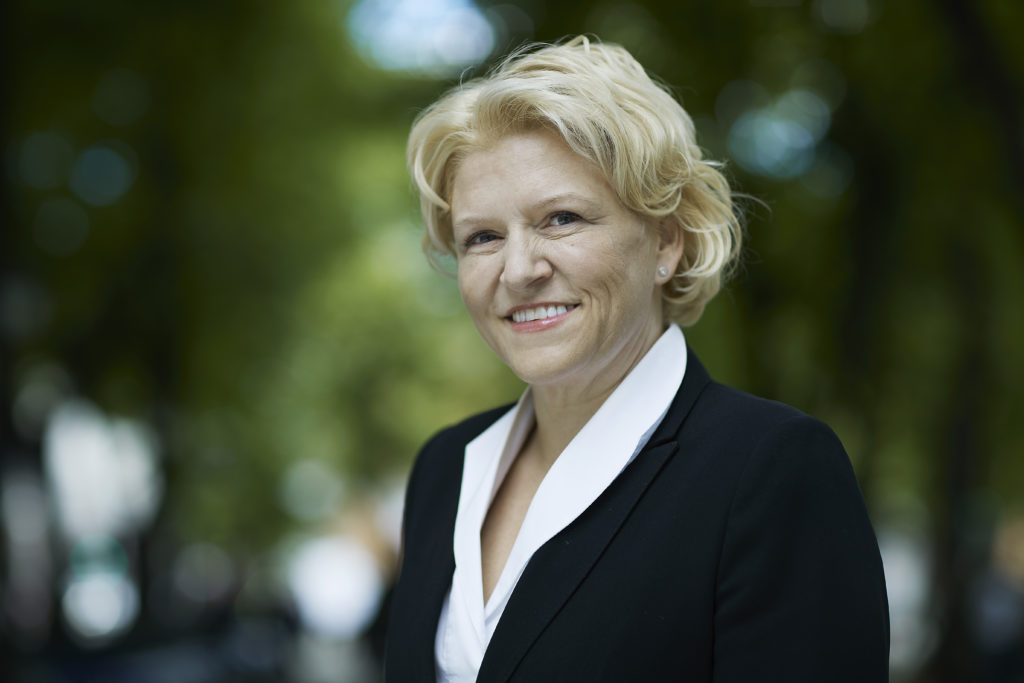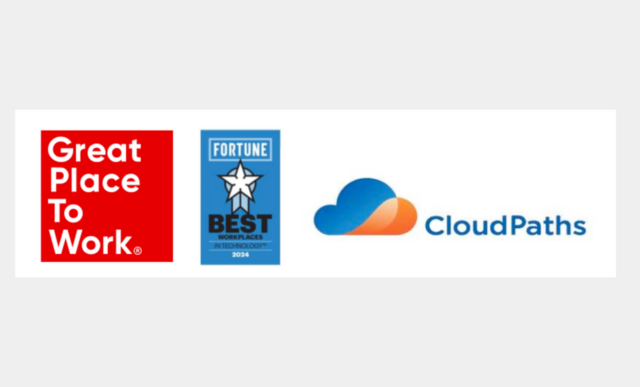Diverse Perspectives Create Strategic Business Advantage
An interview with Ashild Hanne Larsen, Equinor’s Vice President of Subsurface Excellence and Digital, about what diversity, equity, and inclusion mean to her and how the international energy company is embracing the concept.
Written and edited for clarity and length by Brianna Shipley Editorial Director, SAPinsider
Editor’s note: This article appears in SAPinsider’s 2021 September Executive Magazine.

Explore related questions
Equinor is an international energy company headquartered in Norway. Today, it employs more than 20,000 people worldwide, but the organization started from humble beginnings in 1972 storing its cash in a cigar box, according to Ashild Hanne Larsen, Equinor’s Vice President of Subsurface Excellence and Digital.
Equinor continues to evolve and face change against a backdrop of energy transition, geopolitical turmoil, and the company’s desire to move from a traditional oil and gas player to become a broad energy company and play its role in the world’s journey towards reaching net zero. Technology — both from major providers and niche players — is set to play a key role as an enabler for transformation.
Larsen’s own professional journey is worth noting and one she refers to as “somewhat unusual.” She began her career with Equinor — a more than 25-year tenure — as an offshore catering assistant where she spent her days on offshore oil rigs making beds, doing kitchen work, and removing waste from people’s waste baskets. Subsequent roles in HR and technology projects led her to where she is today. Larsen’s dedication to the technology space includes supporting Equinor’s mission to achieve diverse and inclusive teams across the entire company by 2025.
“Technology is increasingly shaping the way we all work and live, and the people who choose a career within technology are the ones who will shape what products and services we’ll have access to in the future. To make those solutions relevant and innovative and ensure that they address the different needs of users in a company and people in society, I think it’s key that the people who design and develop them are also diverse. We have a responsibility to look beyond our own companies and really try to build a more diverse pipeline of top talent,” Larsen says.
SAPinsider’s Chief Research Officer Rizal Ahmed sat down with Larsen to learn more about her perspective on the topic of diversity, equity, and inclusion (DE&I), how Equinor is embracing the concept and Larsen’s advice for being a leader in today’s business landscape.
Q. What does DE&I mean to you and why is it such a critical issue to address in the technology space?
From my perspective, which is shared by Equinor, diversity is fairly broad. It includes experience, competence, age, gender, educational background, religion, and disabilities. In short, it’s the cognitive and demographic factors that help shape who we are and our perspectives.
Diversity is often linked to inclusion, which to me is the next step. Inclusion is about really embracing and driving a culture that encourages each individual to bring his or her whole self to work and speak about ideas and topics that he or she is interested in, and also that enables each individual to perform at his or her best.
In the technology space, less than 30% of professionals in the world are female. At Equinor, we believe diversity drives creativity, innovation, and better business results. If we are going to realize our ambition of a low carbon future and make that a reality, technology will be such an important piece of the process, improving carbon efficiency in our operations, accelerating decarbonization through carbon capture and storage, and building a profitable renewables business.
For Equinor, that makes diversity in technology instrumental for success. We have a responsibility to look beyond our own company. We need a talent base for technology that is more diverse than what we currently see and we have a responsibility to address this need beyond just our on own company. We have to start targeting early in schools and then universities, but also various professional networks.
Q: I know it’s been a personal journey for you, being a woman in a very tough industry and coming up through the ranks at Equinor and in the technology space. What have been some of your lessons along the way as well as challenges you’ve faced, and who has been helpful to you?
A key thing for me has been role models, both male and female, who have inspired me and showed me what is possible. In recent years, I have learned a lot from our senior executives, but when I was a catering assistant offshore, that level of the organization was beyond both my dreams and my reach. Instead, I always looked at what the leaders at the level above me were doing. I started to think that if they can do that, maybe I can do that too. I developed a mindset of thinking that anything is possible and that when people ask me to do something, it’s not because they want me to fail. It’s because they want me to succeed. As a consequence, I started saying yes to opportunities and that’s something I continue to do today. And it serves me well, because either you learn very quickly and you succeed, or you run into problems and you learn even more quickly and grow from the experience. So, there’s absolutely no downside.
Q. How is Equinor bringing the concept of DE&I to life?
We’ve set an ambition across the company that by 2025, all of our teams should be diverse and inclusive. We have set a diversity and inclusion key performance indicator (KPI) that we measure on a monthly basis. Additionally, we’ve implemented a recruitment target where we aim for a 50% balance in gender and nationality.
People sometimes ask me, doesn’t that mean that you compromise on your qualification standards? And my clear answer to that is: we still base our recruitment on having the right competence and experience to successfully meet the requirements of the role. But we are very conscious of not letting that become an excuse for continuing to recruit the same type of people from the same places and educational institutions.
My personal experience is that reaching these targets requires commitment, involvement, and clear expectations from us as leaders. I’ve found that with a little extra effort we’re able to recruit qualified and diverse candidates for our roles.
Equinor provides extensive training on diversity and inclusion as well as unconscious bias.
Something that I’m particularly pleased about is Equinor’s introduction of paid parental leave globally for all group employees to make sure that we have an equal starting point when it comes to that.
Q. How has Equinor adapted its hiring practices to ensure you meet your standards and find the right people of diverse backgrounds? And how do you identify and eliminate unconscious bias from decision making?
We’ve probably spent a little bit more time and effort finding the right candidate. What I have learned is that at the outset, people are very prone to follow the patterns that have worked for them in the past. Changing this habitual mindset for Equinor required consistently engaging with the recruitment teams, being hands-on in the process, and continually challenging complacency.
Each role that we hire has different expectations and standards assigned to it initially, but we allow some flexibility. When determining requirements, we look at the role not only in isolation but against the team and what’s required to benefit its current structure and skillsets.
Some of the most powerful learnings around unconscious bias for me have been when I’ve slipped myself. I can vividly remember a late-night many years ago when I worked in HR, we were discussing a number of candidates for a key position that also involved some commuting. We had a mix of male and female candidates and I heard myself say something along the lines of, will she be able to make the commute? And when I heard myself say that I had to stop and ask myself and the others, would we have asked this question about the male candidates? We hadn’t so far.
Sometimes these questions come under the guise of being caring or helpful, but what’s become very clear to me is that if we ever want diversity and inclusion to become the norm, we have to let people themselves make those choices. We cannot do that for them. That is just not fair. It has to be up to me whether I, as a mother, would take on a role where I would have to commute.
Q. What have you seen in Equinor as a result of DE&I initiatives?
As part of Equinor’s DE&I KPI, we’ve developed a leadership dashboard that measures for each team the degree of balance when it comes to gender, nationality, experience, as well as balance across several generations in the team. These results make DE&I so much more tangible and easier to track and discuss. We have set a clear ambition across the company that all the teams will have two or three of these diversity dimensions, as well as an inclusion index of 80, which we’re measuring through questions in our annual people survey. Today, the gender representation in our executive team is 50/50.
Achieving positive results and business benefits as a result of DE&I initiatives boils down to effective communication. Start by communicating what DE&I is. What business benefits you expect it to bring and how you’re going to follow that up. And also, what the targets you set actually mean. And a key point for me beyond the business benefits side is that this is about equal opportunities for all. It is not about one group winning over another group or candidates who are not qualified getting the job. It’s about building teams that pair together with the most experienced people with those who are different. I have seen doing those kinds of pairings with great effect, or even reverse mentoring so that people with different perspectives learn from each other because at the end of the day, that’s really what it is about: diversity of thinking to achieve better decisions, better results, and more innovation.
Q: Let’s talk about the technology. SAP customers are trying to figure out digital transformation and moves to the cloud and SAP S/4HANA. How does DE&I tie in to support that? How does it help businesses to innovate and transform?
Innovation will be key going forward and research proves that diverse companies have documented that they are better at finding new solutions. They’re also more profitable than competitors. What makes DE&I especially important right now within and outside of Equinor is that across industries we’re trying to find solutions in a situation where the pace is increasing. We’re all looking at ways to be more innovative in how we address challenges, create new business opportunities, and support technological advances, and those all depend on our ability to innovate and to think differently. It used to be all about who knew the most. Now it’s about who can learn the fastest. And that requires different perspectives.
Q: What opportunities and challenges lie ahead for DE&I over the next year?
Despite the promise of equality, progress towards it has been slow, fragile, incremental, and reversible — and dramatically undermined by the COVID-19 pandemic. In fact, in every region of the world, girls and women are still more likely to be poor, illiterate, hungry, unhealthy, underrepresented in leadership positions, legally constrained, politically marginalized, and endangered by violence. For me personally, the key thing now is to focus on diverse teams and also focus on how you can succeed as a leader of diverse teams, because these days, the old-fashioned control and command leadership doesn’t work well anymore.
Leaders need to adapt their views and find rewards in leading diverse teams. Leading people who are like yourself can feel comfortable and efficient because there may be more consensus, but what people forget is that consensus doesn’t drive results.
As leaders, we have to make the choice and the effort to change and adapt ourselves. To successfully build and lead these diverse teams and getting to diversity from a number’s perspective is really only the beginning. We have to be willing to change our own approaches and our workplaces to adapt to the broader needs of others and actively look for and appreciate people and views that differ from our own. And from where I’m sitting, it’s really not enough to accept that we have colleagues who look or think or act or choose differently. We have to really believe that this adds value and actively use those differences to improve our team performance.
Key DE&I benefits
According to Larsen, the benefits of diversity and inclusion have been well-documented beyond Equinor’s experience for years through research. She cites the following key points:
- According to data reported in 2010 by the Chief Executives Board for Coordination — United Nations, employees in diverse organizations perform better against goals. Retention is improved and the emotional commitment to the company and to colleagues is higher.
- According to McKinsey’s 2020 diversity wins report, the relationship between diversity on executive teams and the likelihood of financial outperformance has strengthened over time.
- Research studies show that organizations with an inclusive culture are three times more likely to be high-performing, six times more likely to be innovative and agile, and eight times more likely to achieve business outcomes.
- Despite these facts, says Larsen, progress is just too slow. McKinsey found that in the past six years, 50% of the firms that they track have made very little progress in ethnic and gender diversity or even seen gender and ethnic minority representation go backward.
- Research shows that high-performing teams are both cognitively and demographically diverse, that diversity of thinking increases innovation by 20%, and helps spot and reduce risk by about 30%.








